John S. Mead
– Master Science Teacher –
As a Life Science teacher, I have a deep and passionate love for microscopic life (protists in particular), and was able to rig up a primitive camera to my microscope in the late 1990s.

John S. Mead
My students loved these early digital videos that I showed in class, but other than the laborious task of burning many DVDs of them, these videos did not get out of my classroom in any meaningful way and I did not think of sharing them beyond my students. This began to change in 2007, when I created a YouTube account and began to post microscope videos for my students to be able to share with their families. Still, I was effectively blind to the value of YouTube beyond reaching my students at home.
That began to change when I started to get messages from other students and teachers asking me about my videos. As I answered these messages, I began to realize that my videos were USEFUL to others and began to create new videos with the intention that they would find use in schools without microscopes or teachers who were as “weird” as I am about microorganisms. This has grown into a collection of more than 30 MicroSafari videos on my YouTube channel which have been viewed in aggregate more than a million times. Here’s an example of what my students and I enjoy investigating …
My life as a science teacher is also woven deeply into the fabric of my favorite hobby—nature photography. Having grown up with relatives who dabbled in what we’d now call travel photography, I dove whole heartedly into nature photography when a combination of the affordability of digital imaging meshed with a professional development trip to South Africa in 2006. The joy of creating images of nature was powerful, and I soon found myself with a website (www.bluelionphotos.smugmug.com) and began to share my images with friends on my personal Facebook page.
As time passed and I added other locations to my photographic adventures, I began to hear other photographers talk about how they valued the long distance connections they had made on Twitter. To be honest, I had been a Twitter naysayer as I saw that Facebook was good enough for my needs—and besides, I did not know many folks who used Twitter.
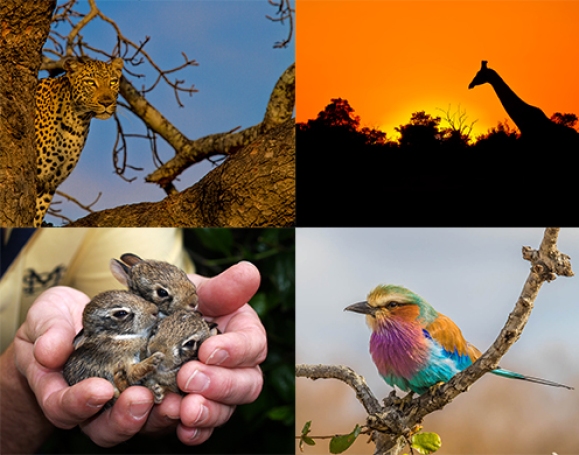
Photos courtesy John S. Mead – Blue Lion Photos
In January of 2011, I took the plunge and created my @BlueLionPhotos twitter account. I quickly realized that Twitter was a very different experience than Facebook. Whereas Facebook was a place where I communicated with friends, family, and folks I know in person, Twitter was a space for encountering new people with similar interests and interacting in short bursts of a focused nature. I learned a lot from my photographic “Tweeps” and slowly began to expand my followings to a more passive observation of educators and scientists.
Encouraged by the response from new people I got to know on Twitter, I started to follow a handful of scientists, and to my surprise, a few even followed me back. By 2012, the stage was unknowingly set for my most significant social media interaction. One that would change my professional life.
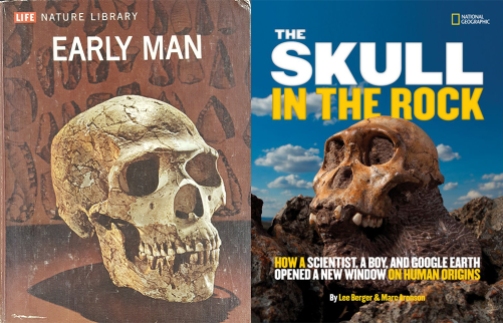
Photo courtesy John Mead
By the summer of 2012, I had become aware of the discovery of a new hominin species named Australopithecus sediba in South Africa. Now, ever since I was a boy in the 1970s, I had been enamored with the study of human origins (paleoanthropology). Indeed, the book that served as my “security blanket” as a child was F. Clark Howell’s Early Man. This love of human origins became a part of my life science classes over the years and I have always taught my students the discovery stories of the best-known hominin species as I believe understanding HOW we gain knowledge is critical to a deep understanding of what science itself is.
So, I was well-prepped to teach the science of Australopithecus sediba to my middle-schoolers, but did not have a grasp on its discovery story. As it turned out, one of the scientists I had become friends with on Facebook was Dr. Lee Berger, the discoverer (along with his then 9 year old son, Matthew) of A. sediba.
One night in August, as I was planning my curriculum for the year, I decided to message Dr. Berger to see if he would share A. sediba’s story with my students via email. I thought the worst thing that could happen was he could say “no” and then life would go on. Not only did he respond, but he agreed to participate, and asked for some details about my school. I shared that my school was in Dallas and then Dr. Berger mentioned that he was going to be in Dallas in November visiting friends during a stop on his National Geographic book tour promoting his new work, The Skull in the Rock which detailed the discovery story of (you guessed it) A. sediba!
Upon hearing this great news, I asked if Dr. Berger might be available for a morning visit with my students. I was again surprised when a positive answer ensued. After more conversations and reaching out to our local science museum (the Perot Museum of Nature and Science) we added an evening talk that was open to the public. After a fantastic day with students and families, Dr. Berger shocked me by inviting me to his lab in South Africa to meet and study the fossils of A. sediba in June 2013!
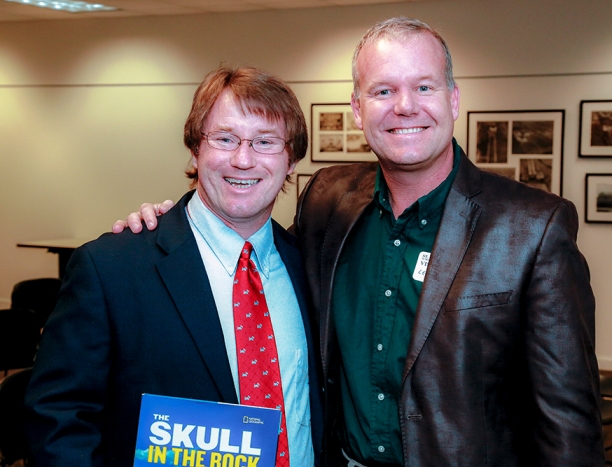
Photo Courtesy of Marc Barta
I was completely floored by his generous offer … and then I proceeded to turn him down!
I promise you that I was really not as crazy as you thought I was at the end of that last sentence. I had already signed a contract to teach a nature photography camp for children during the week Dr. Berger offered. However, in a “lemons to lemonade” moment, the camp changed its plans for that summer and a visit to Dr. Berger’s lab became possible.
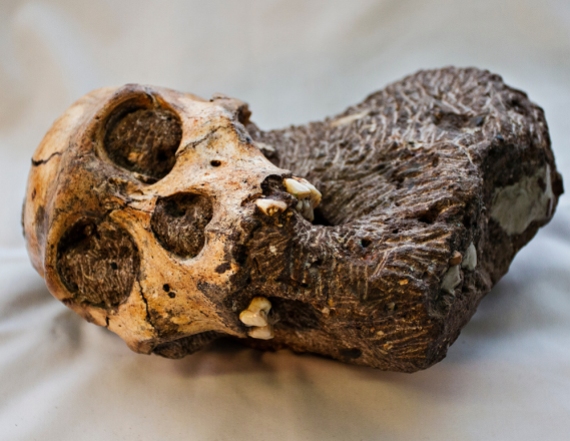
Skull of Australopithecus sediba – Photo courtesy John S. Mead
The week I spent in Johannesburg, South Africa, was an amateur paleoanthropologist’s dream come true. I not only had the chance to see and photograph A. sediba fossils but also had the once-in-a-lifetime chance to hold the actual Taung Child fossil—the first early hominin fossil ever discovered in Africa.

Me holding the Taung Child skull – Photo by Lee Berger
My initial Facebook conversation with Dr. Berger not only allowed me to see some of the world’s great fossils, but I found myself welcomed by the scientists at the University of the Witwatersrand. Despite not being a tenured university professor or even a PhD, I was treated as one as Berger and his colleagues entertained my questions and went out of their way to show me the nuts and bolts of how their lab worked. This even included a field trip to Malapa, the site where both A. sediba skeletons had been discovered.
More on the philosophy behind my stellar treatment in a near future post—I promise!
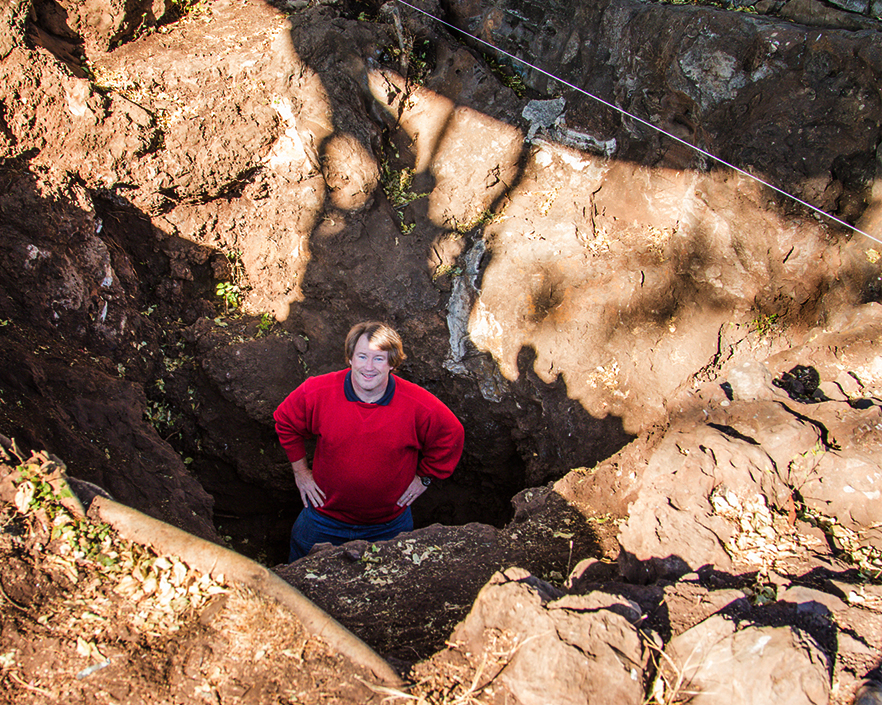
Standing in the Malapa dig site – Photo by Lee Berger
I returned to Dallas on cloud nine and planned to weave the experience into my classes. Little did I know that on September 13, 2013, two South African cavers, Stephen Tucker and Rick Hunter, would discover hominin bones in the Rising Star Cave mere miles from Malapa.
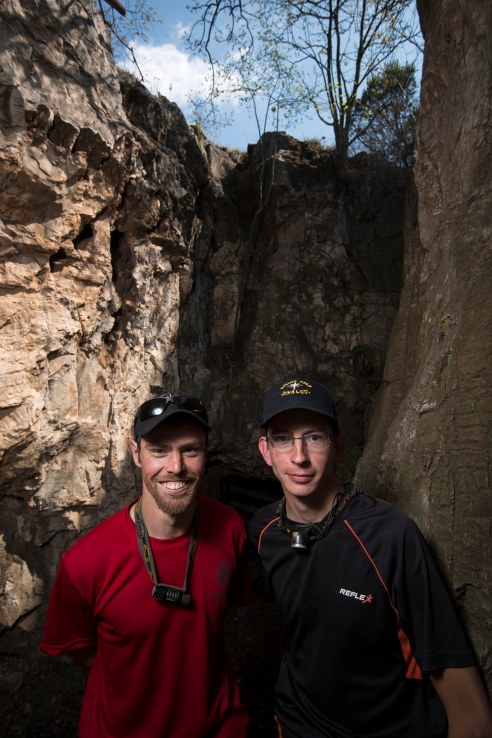
Steven Tucker & Rick Hunter – Photo courtesy Wits University
This discovery caused Dr. Berger to launch a full-scale expedition into the bowels of Rising Star, where only the skinniest of scientists could fit. (Take a look here!)
A public Facebook posting helped recruit a team of six highly qualified female scientists who became known as the “Underground Astronauts” and over the course of November 2013 recovered more than 1500 hominin fossils, more than any location in Africa.

The “Underground Astronauts” – (L to R) Becca Peixotto, Alia Gurtov, Elen Feuerriegel, Marina Elliott, Lindsay Hunter, and Hannah Morris. Photo courtesy John Hawks
Breaking with the tradition of keeping a hominin fossil dig secretive, Berger and his colleagues began to live-tweet the hour-by-hour and minute-by-minute activity of the #RisingStarExpedition. My students and I followed it live with great excitement, which led to me realizing that much of what was being tweeted would be lost to cyberspace for those who did not use Twitter. At the happy expense of late nights, I began a daily video review of tweets from Rising Star so that they could be easily shared with students and other interested parties.
My “Twitter Play by Play” (http://bluelionphotos.blogspot.com/2013/11/rising-star-expedition.html) as it came to be known, allowed thousands of students and teachers to follow along from the start of the expedition even if they found out about it months later. It now serves as a primary source for interested parties wanting to dig deep.
As Berger’s team worked to identify and study the fossils during 2014, I was able, thanks to social media, to build upon the relationships I had made online as well as in South Africa during my visit. This led to an in-person visit from underground astronaut Lindsay Hunter in January and a second visit from Dr. Berger in November 2014.
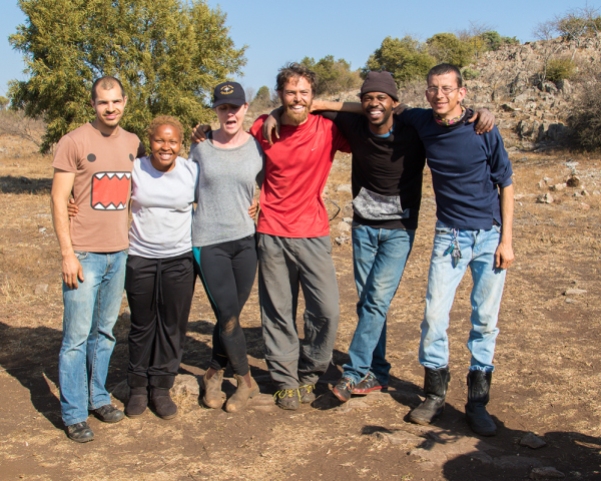
The Hill Foundation Exploration Team near the Rising Star Cave. Photo courtesy John S. Mead
Based on my work with the Twitter play-by-play project, I received an invite to return to South Africa in July 2015 to visit the Rising Star cave and see the as-yet-unnamed fossils in person. This time I did not refuse!
My 2015 visit mirrored my first visit in being welcomed by the entire team as a team member myself. Indeed, they understood and appreciated that a classroom teacher could help the world understand this mysterious new hominin.
The highlight of the visit was having the chance to spend time at the cave and interview all members of the newly formed Hill Foundation Exploration team as well as the senior scientists. These interviews ranged from 10 to 30 minutes and allowed the story of this discovery to be told to students and teachers in a depth difficult to find in mainstream media. They remain on my blog (http://bluelionphotos.blogspot.com/2015/09/the-rising-star-interviews.html) and my YouTube channel, and are available for anyone eager to explore the Rising Star story in more detail.
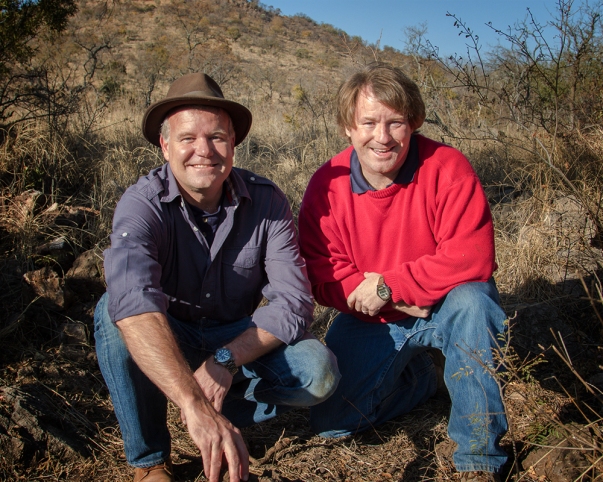
Dr. Berger and me in the Cradle of Humankind – Photo by Julie Lesnik
When I left South Africa in 2015, I was sworn to silence until the publishing embargo broke with the official announcement. Just wait to see how the news exploded in my next post!
… By the way, my students will tell you I LOVE cliffhangers!
Learn more about the Blue Lion Blog | Cover Image by Pexels from Pixabay | CC0 Creative Commons

